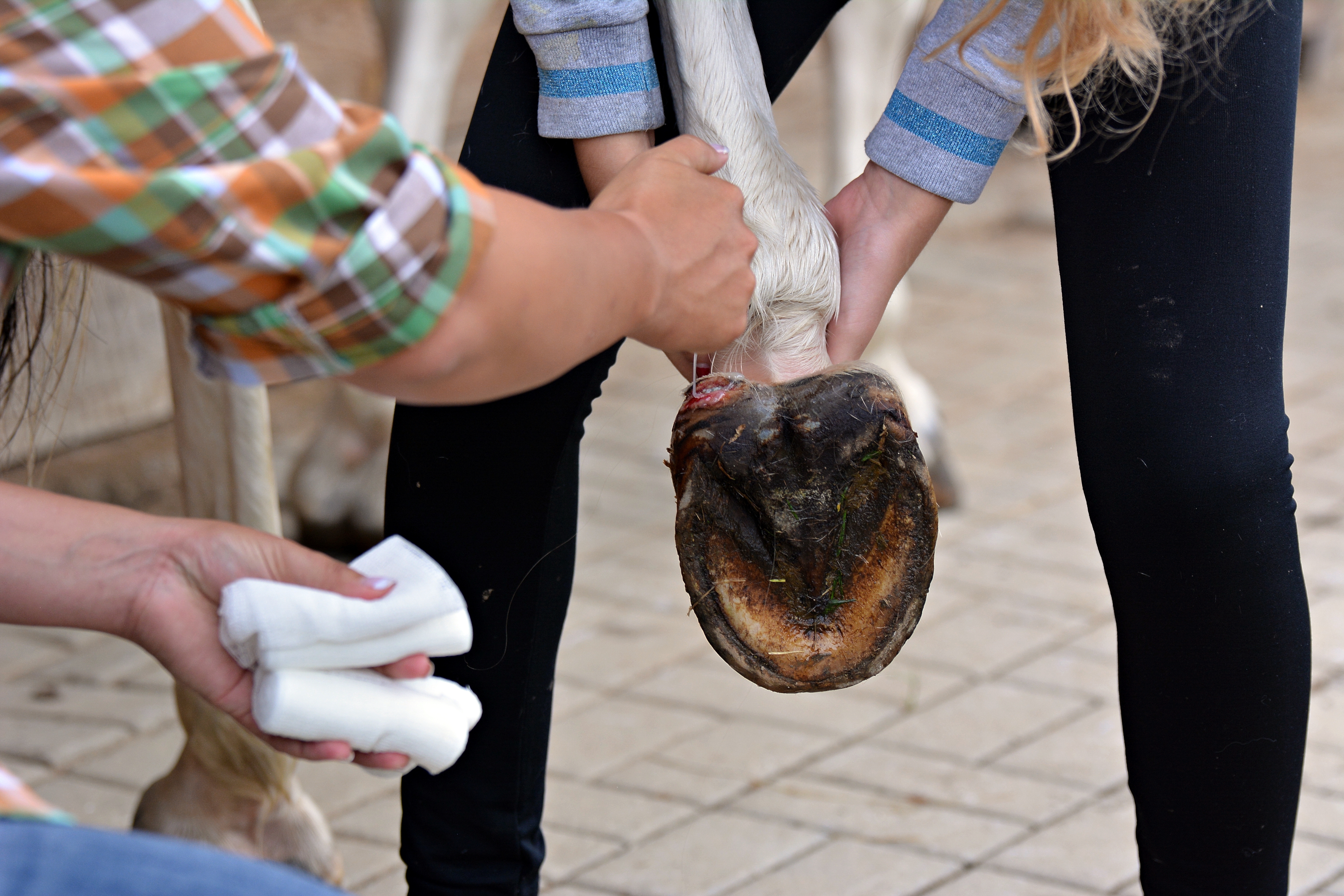Indispensable iodine
- August 17, 2023
- ⎯ Editors of EQUUS
The first-aid kit of any barn is likely to include at least one bottle of povidone iodine (trade name Betadine). This antiseptic is available without a prescription and is used to kill bacteria, viruses and fungi on the skin and in wounds. Povidone iodine is available in several formulas, so you’ll want to know the differences between them:

Povidone iodine solution, which is also called “tamed” iodine, is the familiar dark reddish orange, water-based liquid used to disinfect minor wounds. It is applied to the skin after the area has been cleaned and dried. No rinsing is necessary. The solution does not irritate the skin, and it can be used under a bandage. If kept in a temperate location and in its original bottle, povidone iodine solution has a fairly long shelf life.
The bottled solution is commonly used around the barn, but the same medication is also available in ointments, which form a thicker layer over the wound, and single-use, pre-saturated swabsticks, which may come in handy while traveling or on the trail. Both can be used as needed, like the solution, without worries about skin irritation.
Povidone iodine surgical scrub is meant for cleaning the skin prior to surgery (both the surgeon’s hands as well as the target site on the body), although it is also used to treat or prevent fungal and bacterial skin infections. This product contains additional soaps. It is mixed with water and worked into a lather, then scrubbed onto the target area; thorough rinsing is required. Do not apply this product to open wounds.
You may also encounter iodine tincture (also sold as “strong iodine”). This is not the same as povidone iodine, but both can be used to disinfect minor wounds and skin infections. Tinctures are alcohol-based solutions that sting when applied and can irritate the skin, so these products cannot be used on burns, and treated wounds cannot be bandaged. Diluting the product with water may be necessary to reduce irritation. Tinctures are flammable and need to be treated with care.
Of course, it’s always a good idea to read the label of any product you’ll be using on your horse, just to confirm you’ve got the intended formula and know how it should be used.
This article first appeared in EQUUS issue #430.
Don’t miss out! With the free weekly EQUUS newsletter, you’ll get the latest horse health information delivered right to your in basket! If you’re not already receiving the EQUUS newsletter, click here to sign up. It’s *free*!





